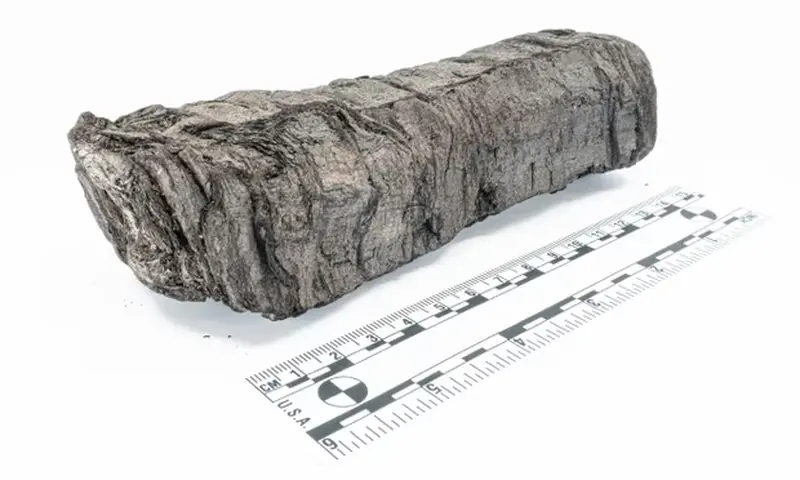This scroll is one of hundreds found in the library of an ancient Roman villa in Herculaneum , a city on the western coast of Italy, which together with Pompeii was destroyed by the eruption Vesuvius about 2000 years ago.
During the excavations of a luxurious villa that likely belonged to the father-in-law. Julius Caesar Archaeologists found a large collection of scrolls. However, the material was charred, so the scientists were unable to read the texts. When the researchers tried to unroll the scrolls, they crumbled and turned to dust.
The papyrus, the content of which was recently reconstructed using cutting-edge technology, is one of three scrolls from Herculaneum preserved in the Bodleian Library (Oxford). Using artificial intelligence and X-ray scanning, the scroll was effectively unfurled on a computer. Several columns of text were revealed, which scholars from Oxford began to read. One ancient Greek word – διατροπή – appears twice in several columns; it means disgust, the publication reported. The Guardian .
The scroll, believed to have been written by the Epicurean philosopher Philodemus, discusses, among other things, the sources of pleasure – from music to food. Scholars promise to provide more details about the content of the document later.

How did the breakthrough happen?
In 2023, entrepreneurs Nat Friedman, Daniel Gross, and computer scientist Brent Sills announced the Vesuvius Challenge to “decrypt” scrolls “Herculaneum using 3D X-ray software.” Last year, the main prize of $700,000 was won by a team of three students: Youssef Nader from Germany, Luke Faritor from the USA, and Julian Schilliger from Switzerland.
Armed with 3D X-ray images of the scrolls (the charred documents are too fragile to be moved), the researchers developed software to virtually unroll the papyrus. They then used artificial intelligence, to detect the ink on the fibers of the papyrus and ultimately read excerpts of the ancient text.

“We are thrilled with the successful acquisition of the image of this scroll from the Bodleian Library,” said Dr. Brent Seales.
Professor Richard Ovenden, director of the Bodleian Library, noted: “This is an incredible moment in history when librarians, information specialists, and researchers of the classical period collaborate to see the invisible. The amazing advancements achieved in the fields of visualization and artificial intelligence allow us to look inside scrolls that have been unreadable for nearly 2000 years.”
